Jaeger-LeCoultre
Jaeger-LeCoutre Introduces the Reverso Tribute Enamel Hidden Treasures Collection
Jaeger-LeCoultre
Jaeger-LeCoutre Introduces the Reverso Tribute Enamel Hidden Treasures Collection
The links between India and the Reverso go beyond the original watch developed for the British polo players.One of the most stunning enamelled Reversos is from 1936. It features the beautiful portrait of the Maharani of an Indian State, although her exact identity has never been confirmed.
Then there is another vintage Reverso caliber 410 from 1949 with an enameled illustration of the Hindu deity Rama. This watch was part of an exhibition hosted by the Victoria & Albert Museum in 2009.
In the early 1990s, Hungarian watchmaker Miklos Merczel started to utilize the rear of the Reverso case for miniature enamel paintings. He launched the in-house enamel workshop at Jaeger-LeCoultre in 1996 with a set of watches that presented Czech artist Alphonse Mucha’s famous decorative panels, The Seasons, from 1896.
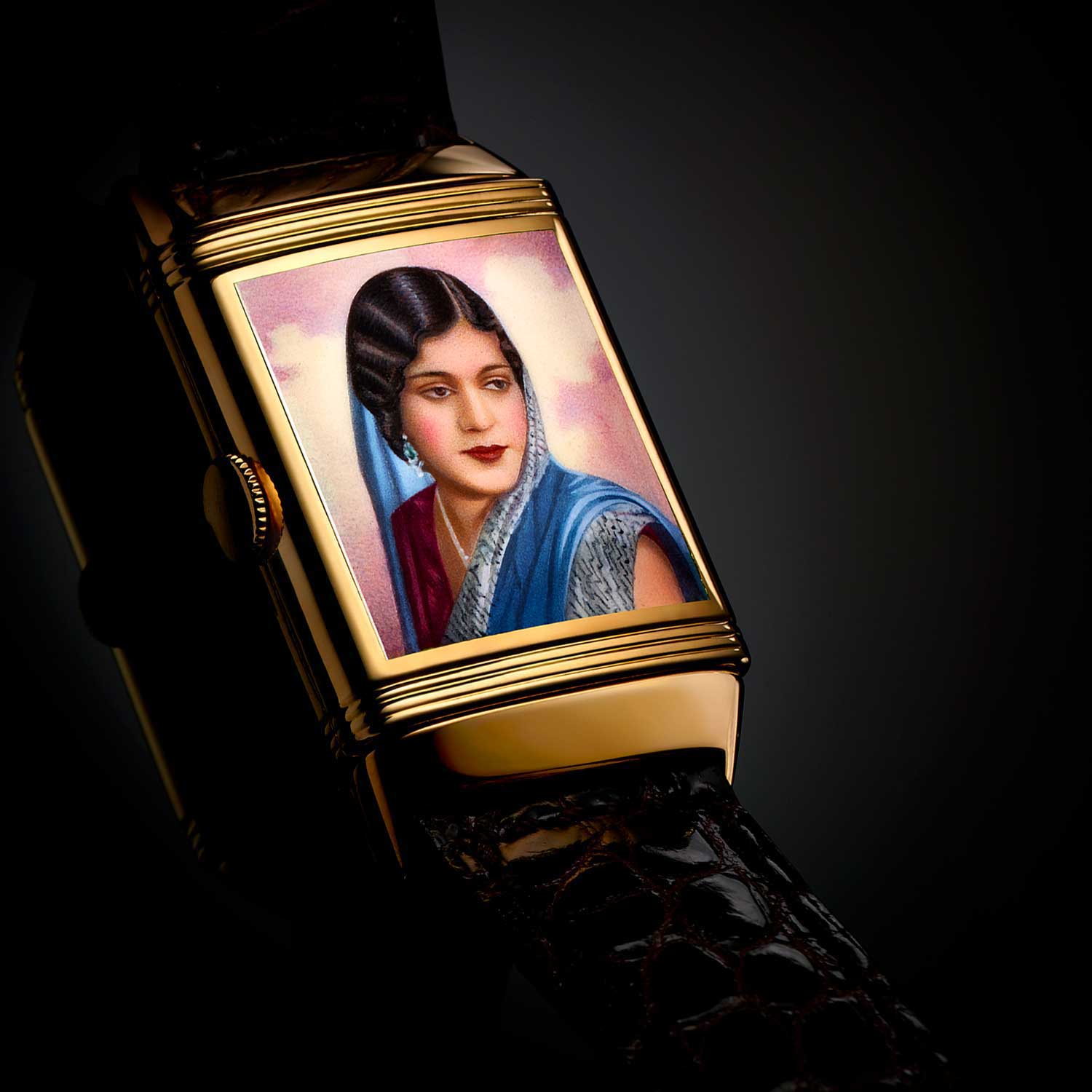
A 1936 Reverso with the portrait of Maharani Kanchan Prabha Devi of Tripura
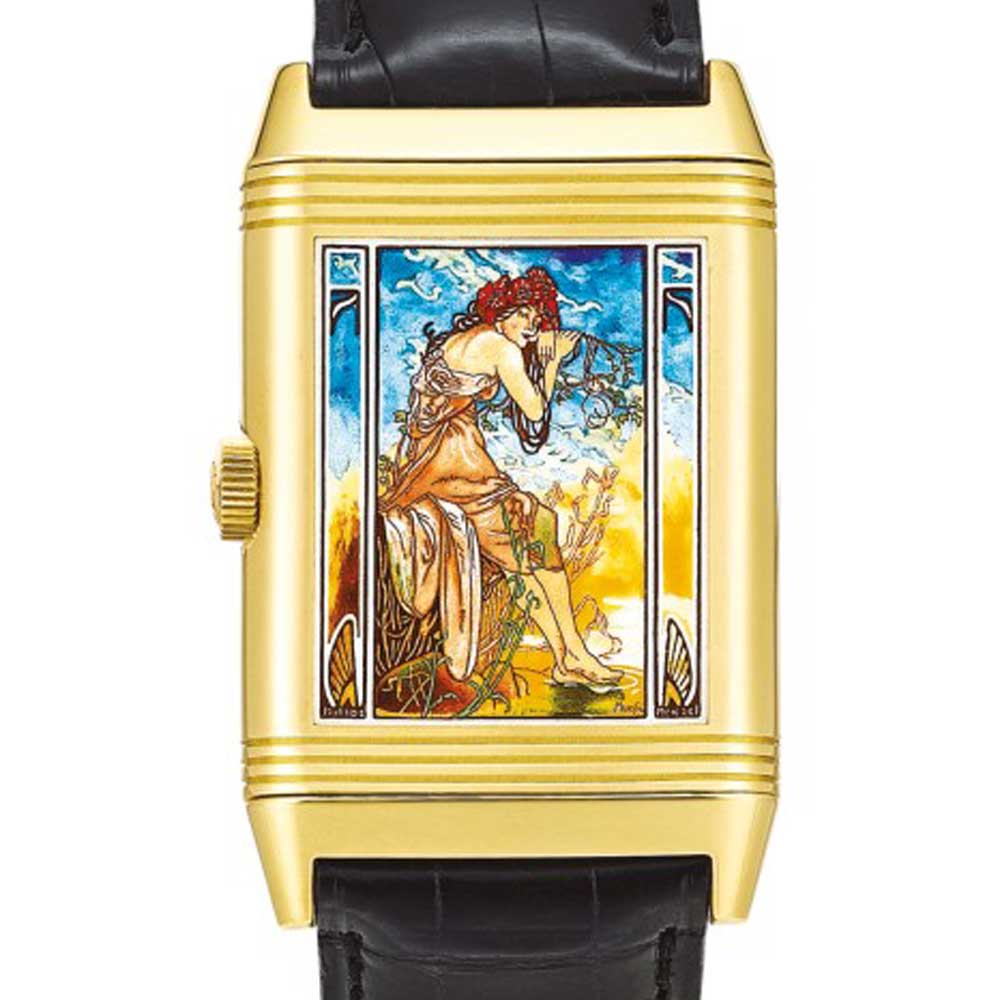
Originally painted by Czech artist Alphonse Mucha, reimagined onto the wrist by Miklos Merczel (Image: Sothebys.com)
Continuing on this grand tradition, the maison has announced three new Reverso timepieces that recreate the works of masters from the early days of Modern Art, namely, Gustave Courbet, Vincent Van Gogh and Gustav Klimt. Based on the theme of “Hidden Treasures,” a piece of work from each artist was chosen to be reproduced on the caseback of the contemporary Reverso Tribute serving as the canvas, in three different expertise: grand feu enamel, miniature painting and guillochage. The Reverso Tribute collection is by far the closest when it comes to details shared with the original Reverso from the 1930s.
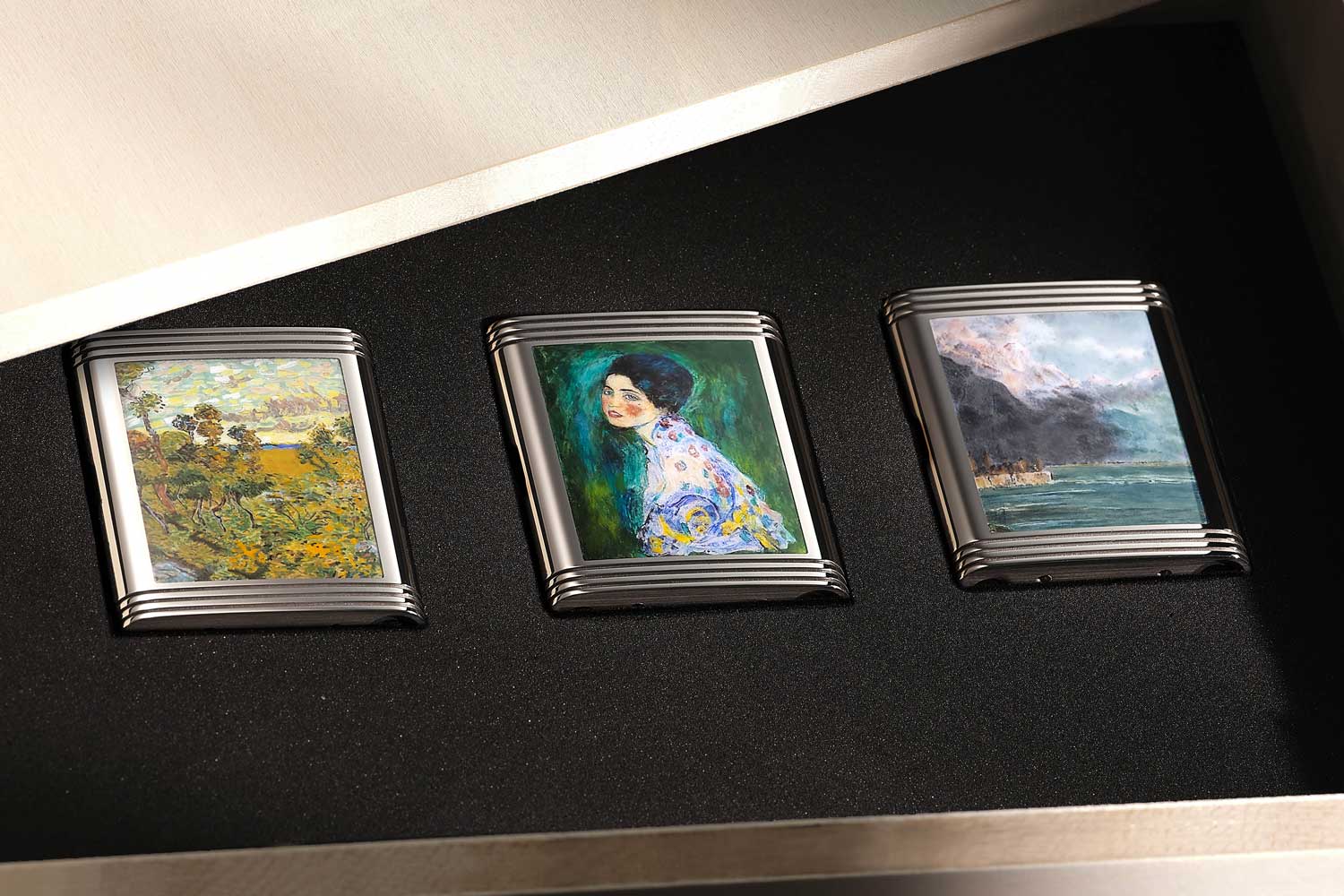
Jaeger-LeCoutre Introduces the Reverso Tribute Enamel Hidden Treasures Collection
Gustave Courbet – View of Lake Léman (1876)
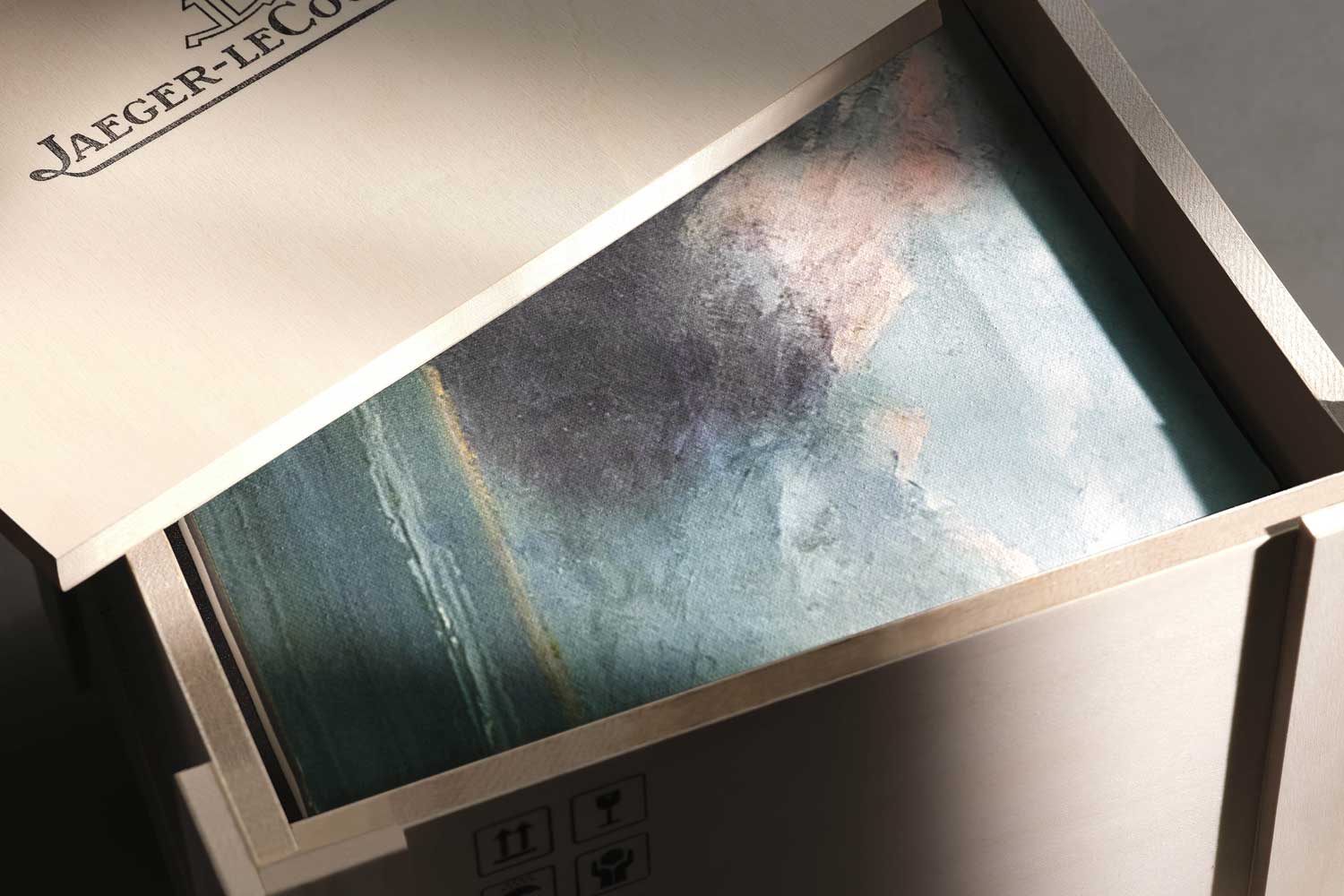
Gustave Courbet – View of Lake Léman (1876)
In 2015, while preparing some documentation for the Musée du Vieux Granville, a curator felt a compulsion to seek a second opinion and reached out to leading Courbet expert Bruno Mottin, of Musées de France. After two years’ worth of research, Mottin certified that the View of Lake Léman was, very much, an authentic piece of art.
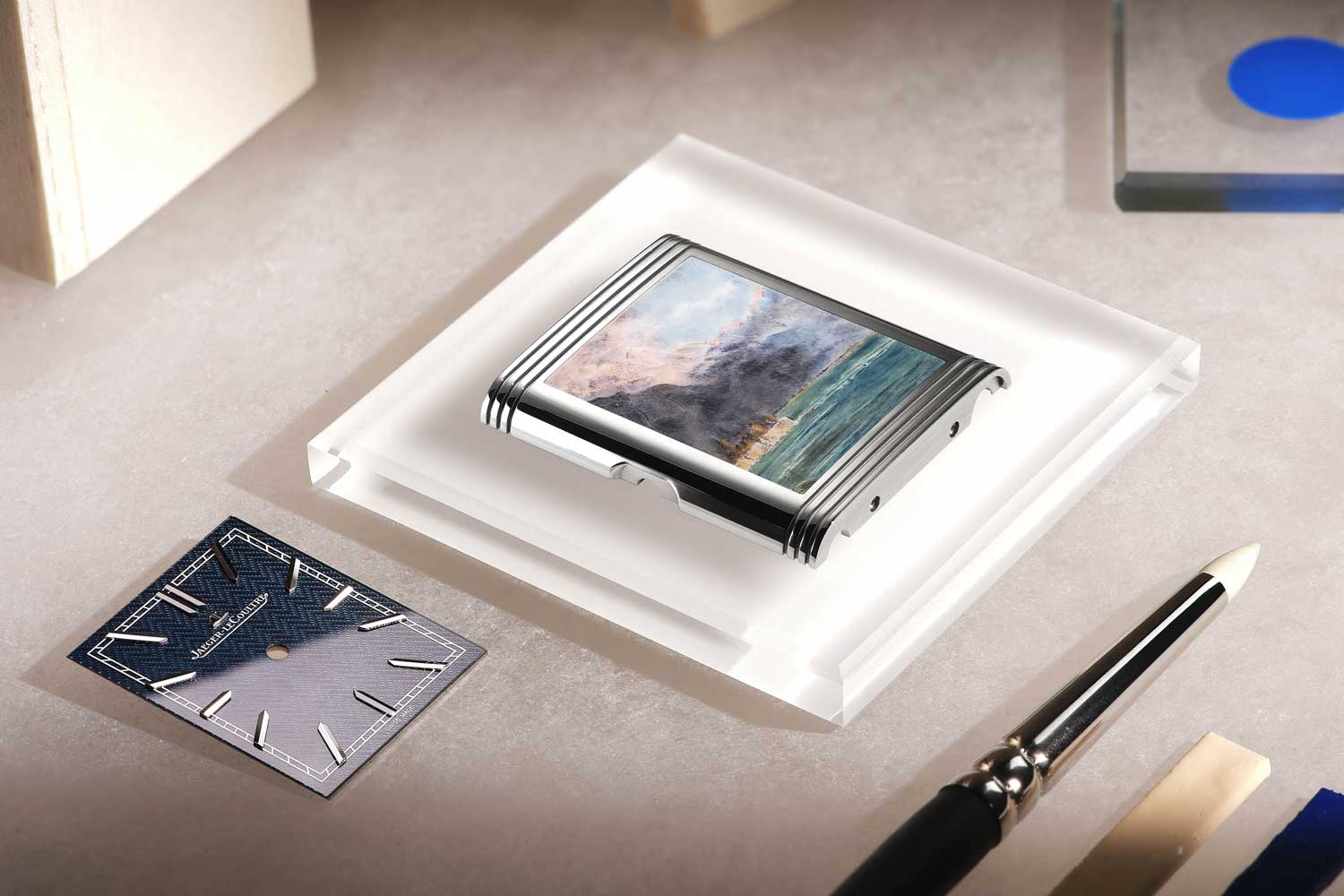
Gustave Courbet – View of Lake Léman (1876)
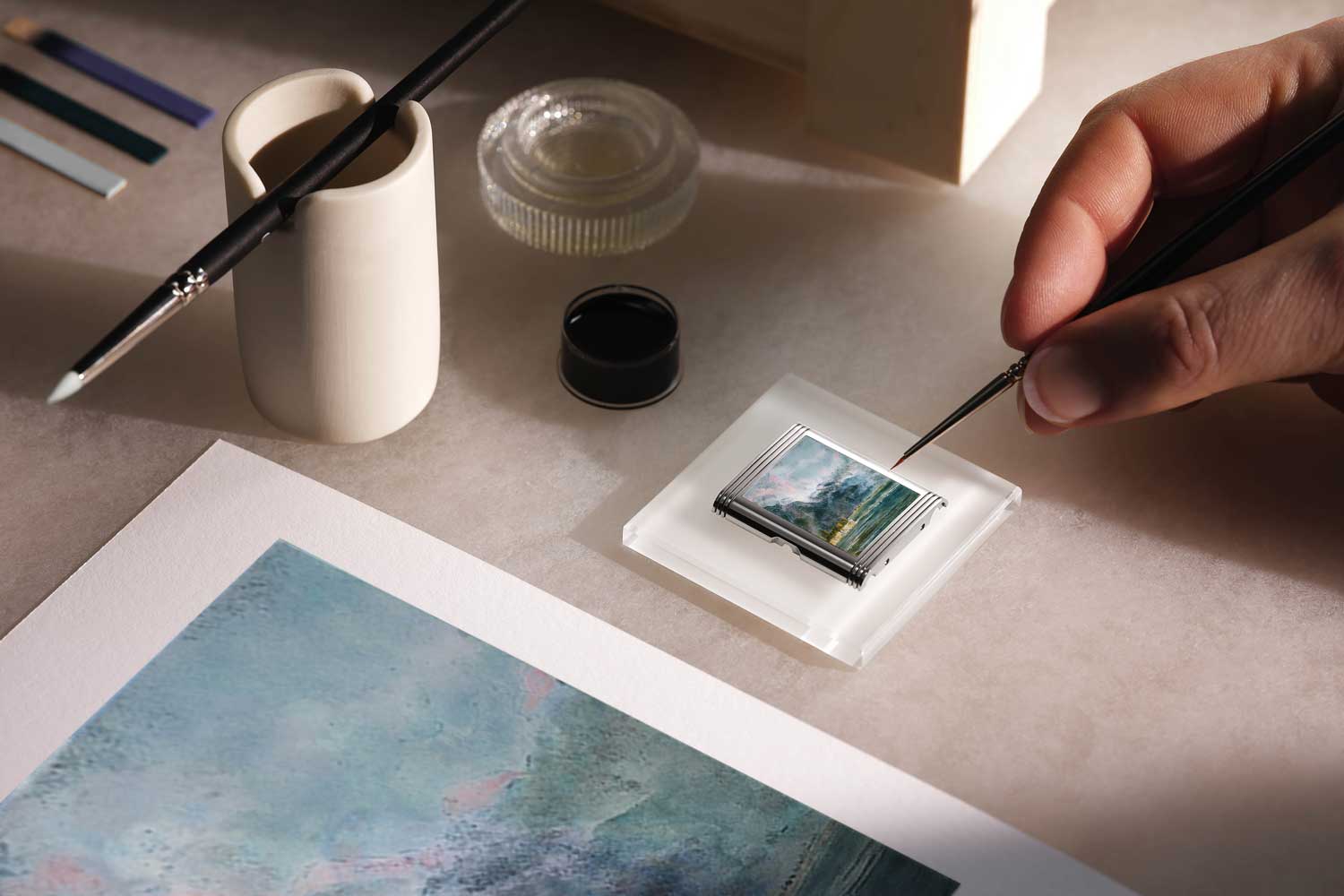
Gustave Courbet – View of Lake Léman (1876)
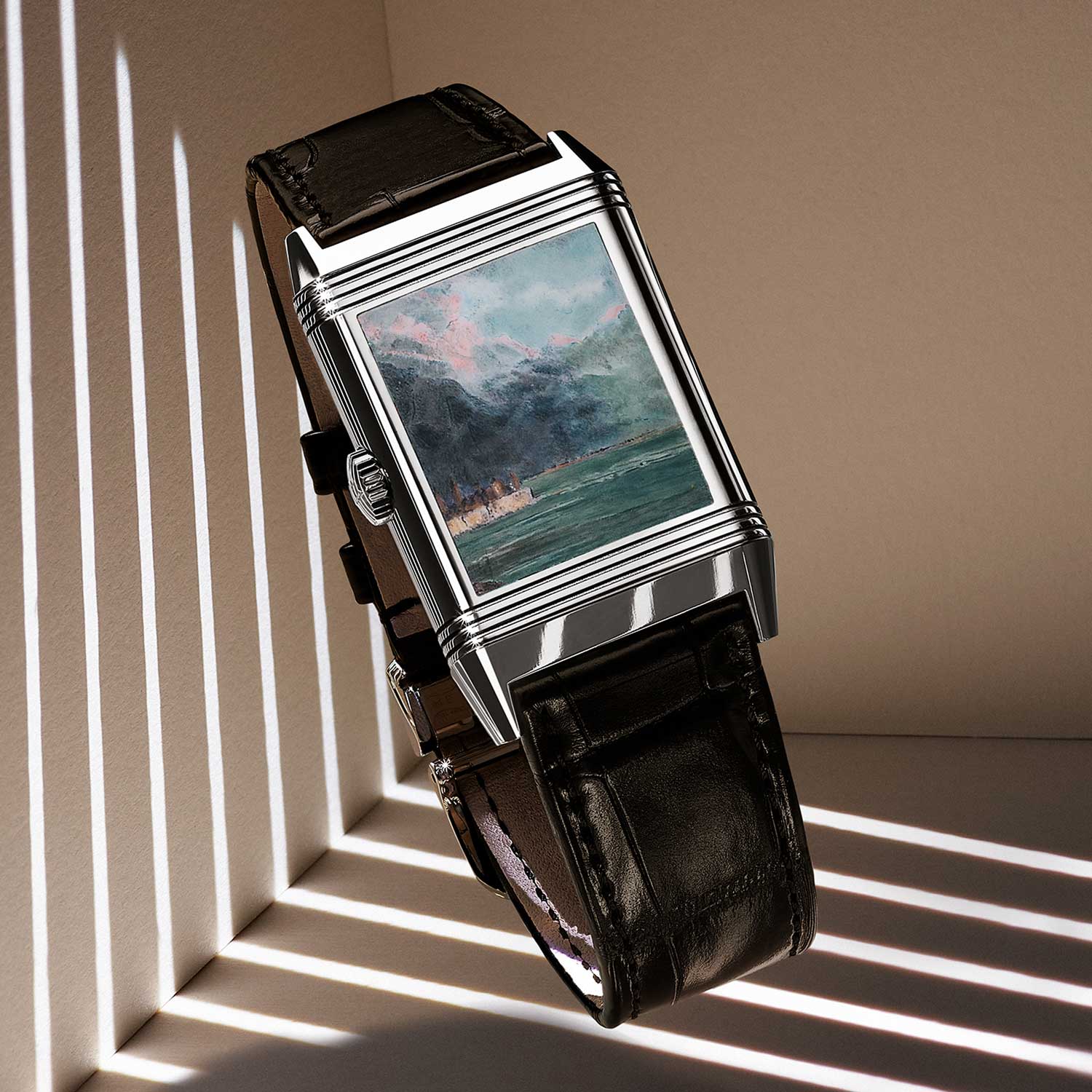
Gustave Courbet – View of Lake Léman (1876)
Vincent Van Gogh – Sunset at Montmajour (1888)
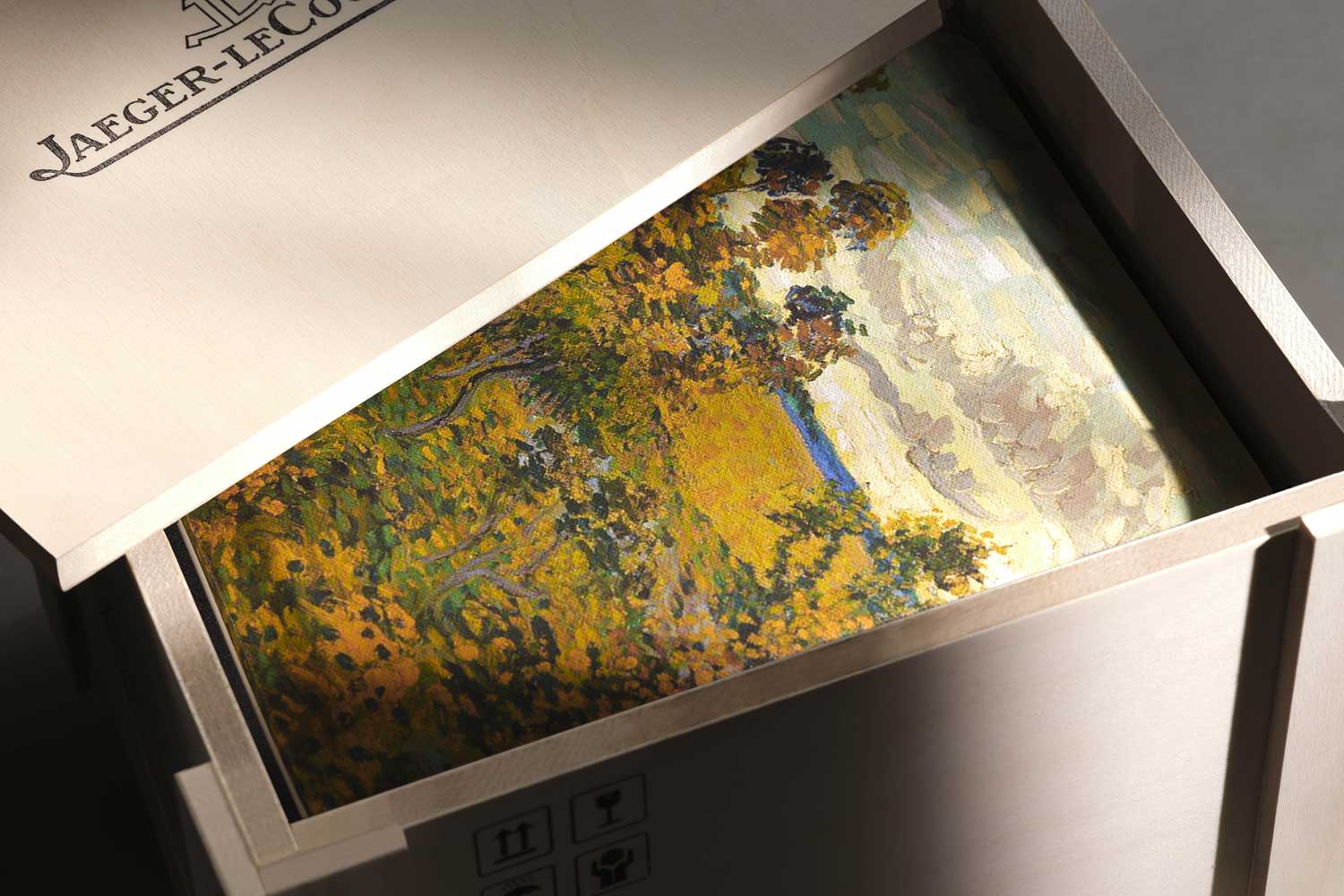
Vincent Van Gogh – Sunset at Montmajour (1888)
It was not until two decades later, in 2011, that experts at the same Van Gogh Museum in Amsterdam, thought it worthwhile having a look at the painting once more and have it be scrutinized using more advanced methodologies. It was in particular, the chemical tests that helped match the pigments on the canvas with that of Van Gogh’s palette from Arles. Therein, in September 2013, at long last the Muesum was confident enough to declare Sunset at Montmajour an authentic work of Van Gogh’s, making this the first full-sized painting by Van Gogh to be authenticated since 1928.
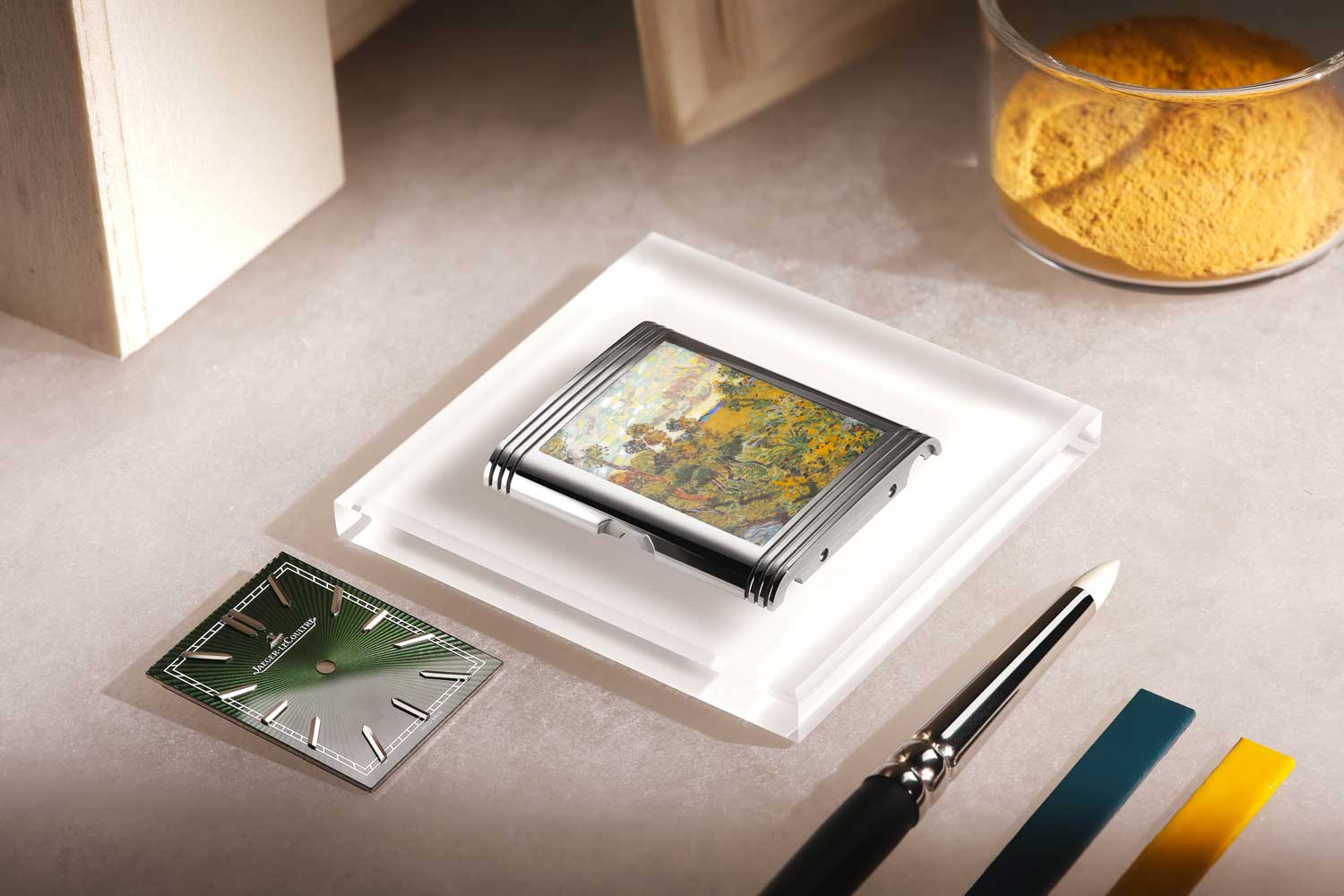
Vincent Van Gogh – Sunset at Montmajour (1888)
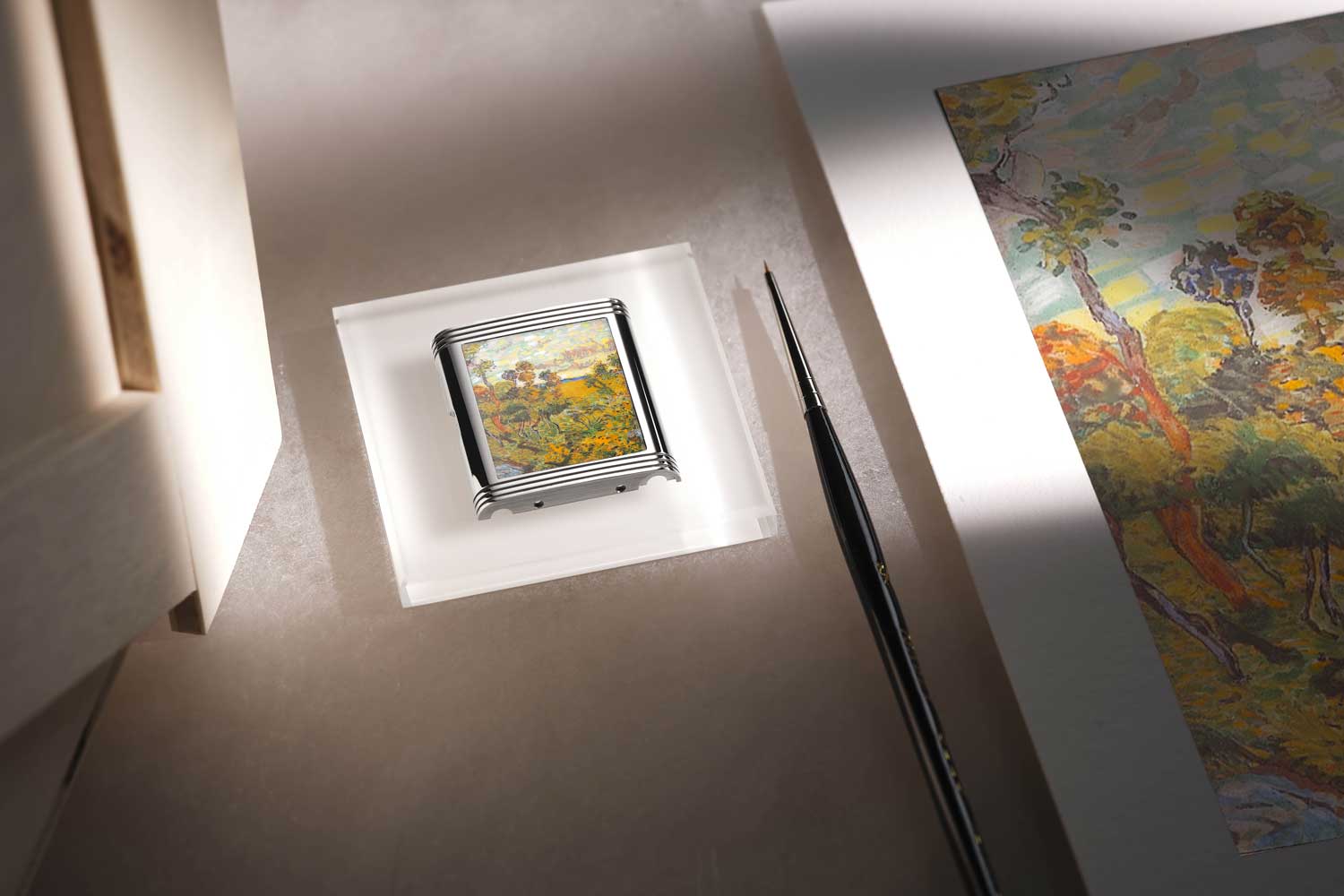
Vincent Van Gogh – Sunset at Montmajour (1888)
Again, the challenge in place for Jaeger-LeCoutre was to transfer all of Van Gogh’s nuances onto the caseback of the Reverso Tribute, including his brush strokes and heavy impasto. The result is surely a worthy addition to the canon of Van Gogh’s legacy, paired with a sunray-guilloché green enamel dial.
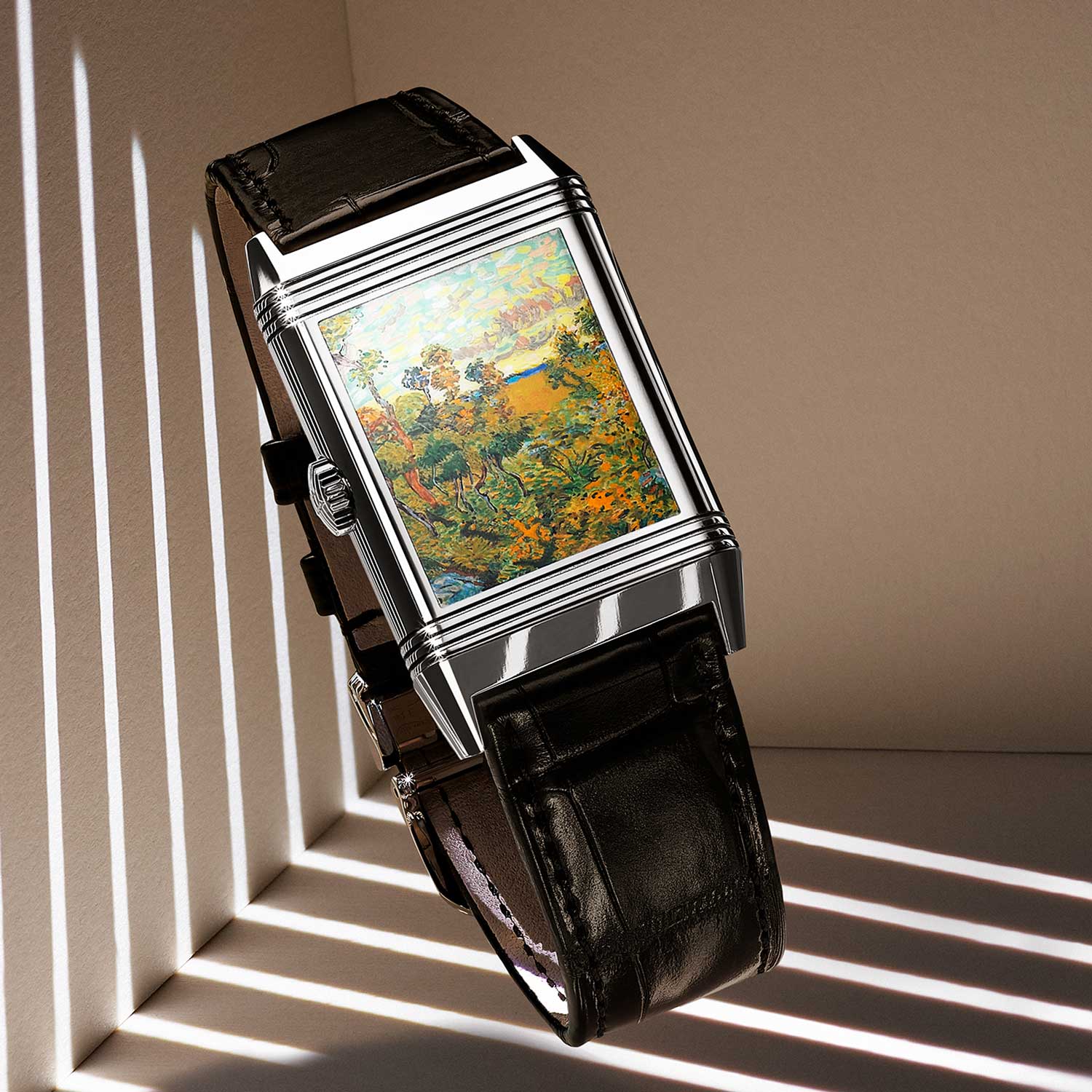
Vincent Van Gogh – Sunset at Montmajour (1888)
Gustav Klimt – Portrait of a Lady (1917)
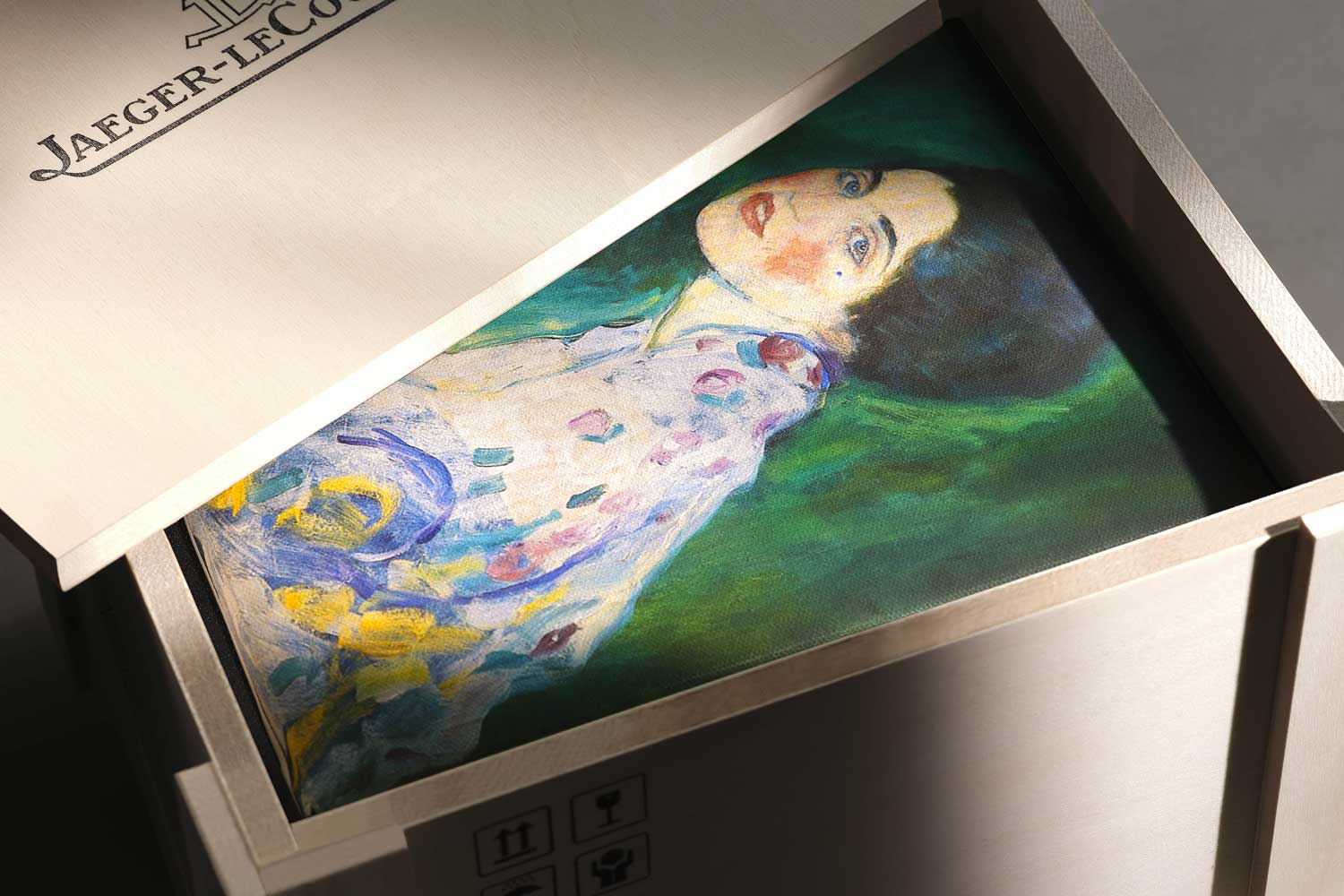
Gustav Klimt – Portrait of a Lady (1917)
Shortly after Claudia Maga’s discover, the painting was unfortunately stolen in 1997, while it was being prepared for a special exhibition at the Oddi Gallery of Modern Art in Piacenza, Italy, where it had been on display since 1925. Many forged instances of the painting seemed to appear in the coming years and most in the art world had thought the painting gone for good.
But then in 2019, a peculiar thing happened. Gardeners clearing ivy from an outside wall of the Oddi Gallery chanced upon a metal panel. Behind which, they found a black rubbish bag containing the lost painting, which was swift authenticated by experts.
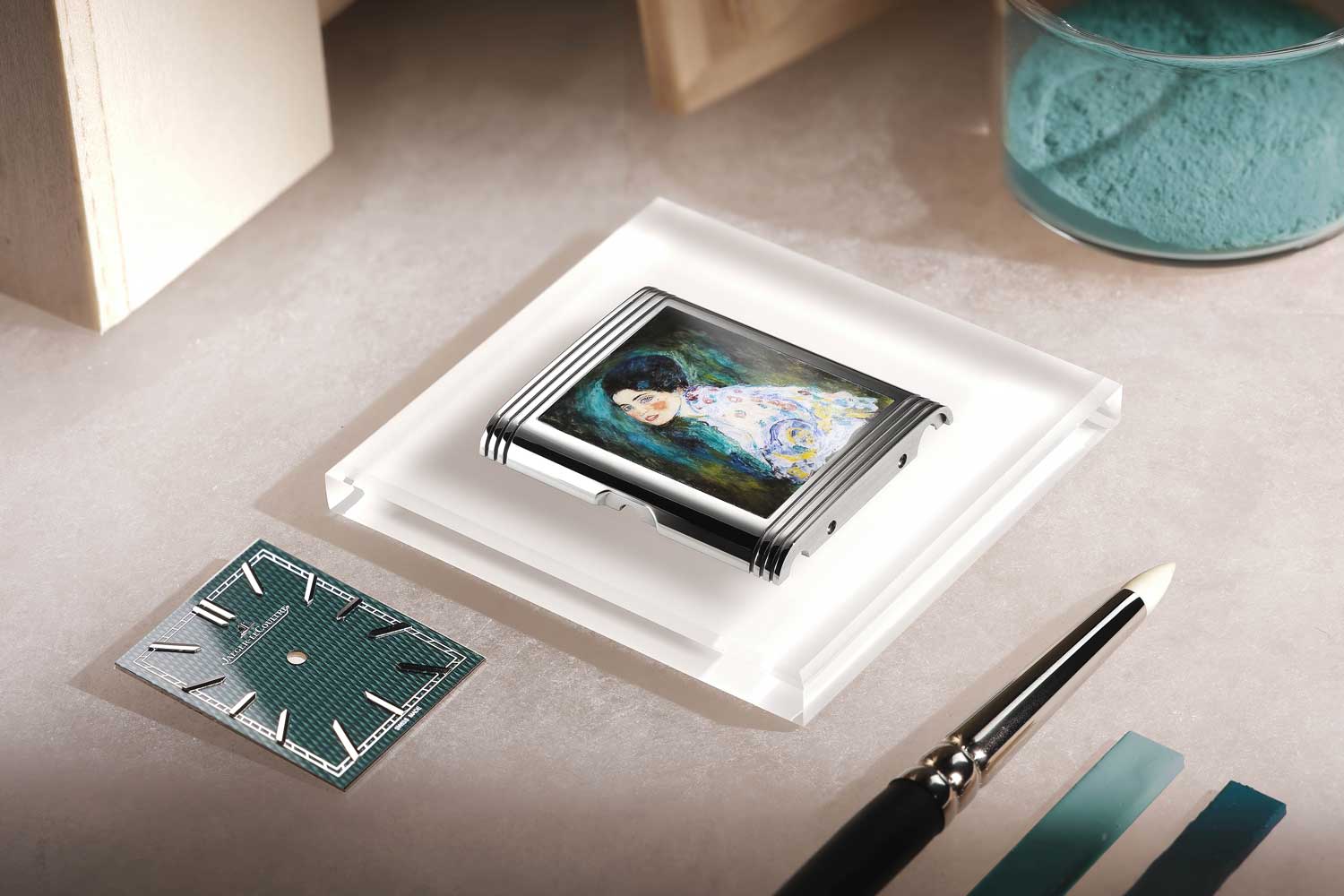
Gustav Klimt – Portrait of a Lady (1917)
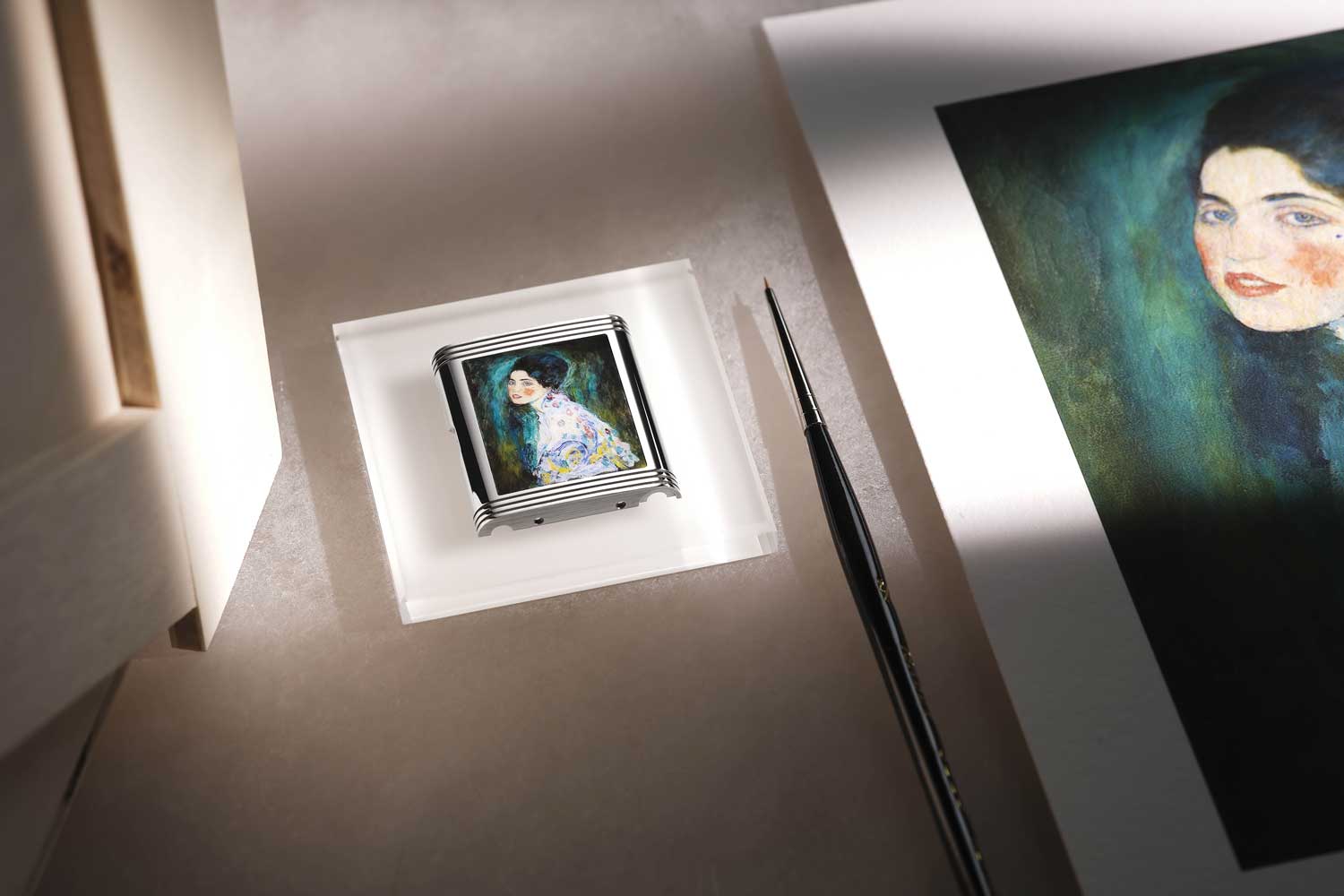
Gustav Klimt – Portrait of a Lady (1917)
That Jaeger-LeCoutre took a painting with such curious history and recreated on the back of a Reverso Tribute is, however, no mystery. Here Klimt’s Portrait of a Lady (1917) is captured in miniature with all of secrecy of the original painting itself, from the muse, to the lady who was depicted on the canvas thereafter, to the painting’s own fascinating trials. The dial on this one is decorated with barleycorn guilloche patten in green grand feu enamel.
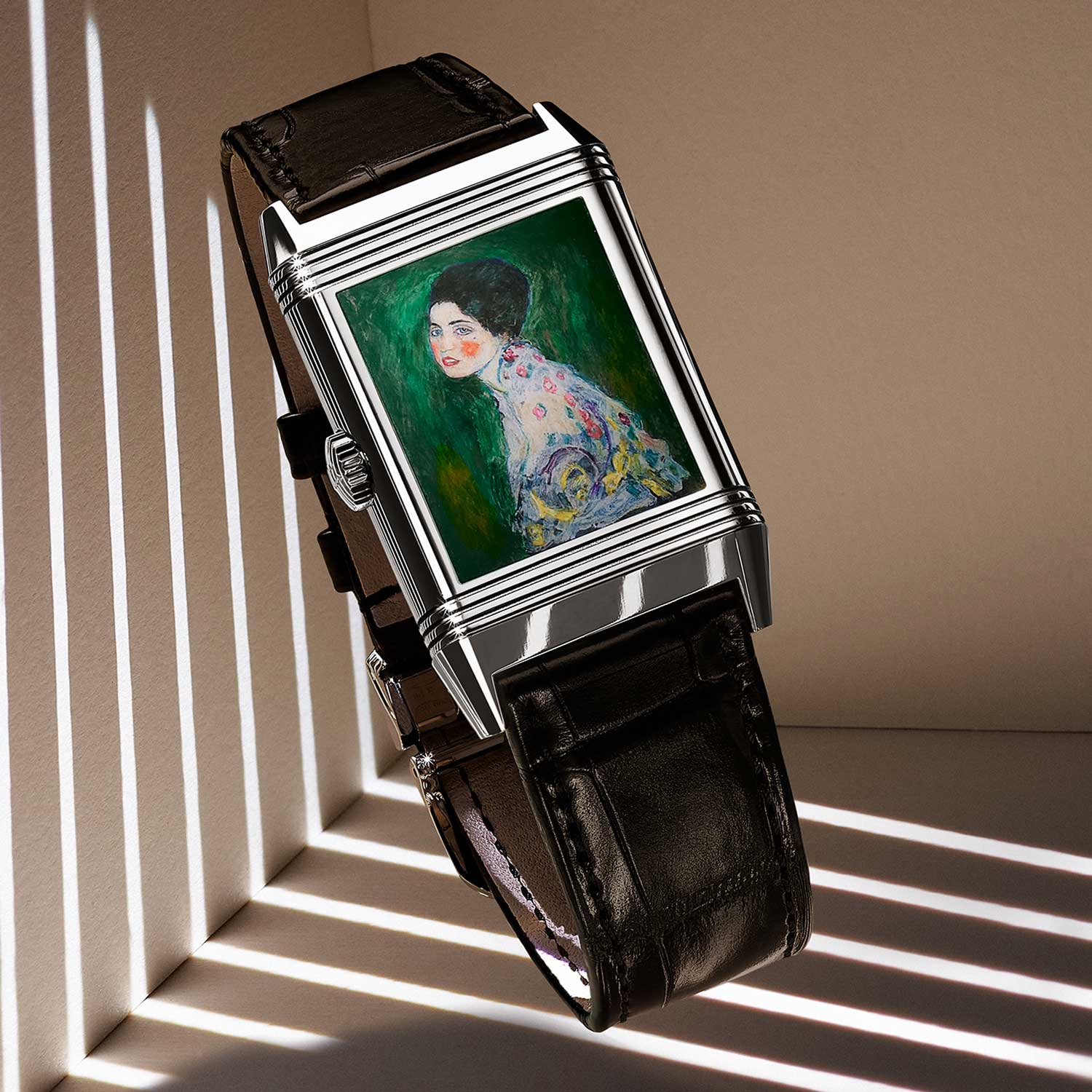
Gustav Klimt – Portrait of a Lady (1917)










